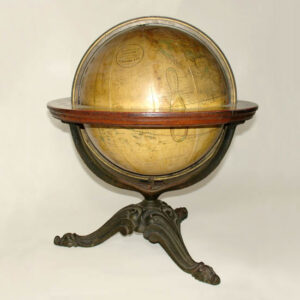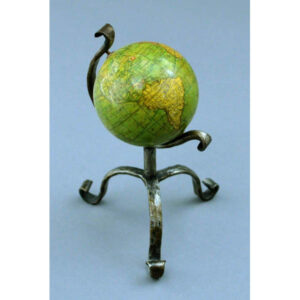Description
The large plaster casts after antique sculptures, including a large statue of Laocoon in the center right and the Apollo Belvedere at the far right, emphasize the importance of the classical tradition in the training of artists in the Royal Academy Schools. The walls are lined with paintings, including early diploma works and works by Reynolds: a self-portrait (just above the Laocoon), and coronation portraits of George III (back wall, below the drape) and Queen Charlotte painted in 1779. George III was the Academy’s first patron, and is also depicted here in a portrait bust by Agostino Carlini (above Mary Moser).
Henry Singleton was an artist in London. He achieved early success, exhibiting at the Royal Academy for the first time while still a student there, and winning a gold medal for a painting while only 22 years old. He continued to exhibit there throughout his life, and is probably best known for a commissioned group portrait of the Royal Academicians assembled in council, an important work that remains on display at the Academy. Singleton was especially known for his paintings after Biblical and literary sources, as well as for portraits, and depictions of contemporary events. Throughout his life he also completed a series of some 90 paintings based on Shakespeare. Many of his paintings were issued as mezzotints and engravings and achieved widespread popularity. He also worked regularly as a book illustrator. His works today are in the collections of the British Museum and the Tate Gallery among others, and his portrait of writer John Boswell is in the Edinburgh National Portrait Gallery.
Charles Bestland was an etcher, engraver, print publisher, painter and miniaturist in London, active from 1783 to 1837. He exhibited at the Royal Academy from 1783 to 1837 and at the British Institution from 1806 to 1836.
Full title centered by Royal Coat of Arms: “To the King’s Most Excellent Majesty This print, representing Portraits of the Royal Academicians is humbly Dedicated by His Majesty’s most Devoted Servant & faithful Subject, C. Bestland.”
Condition: Generally good with the usual overall light toning. Five inch and eight inch tears extending from the top margin into the image, skillfully repaired, along with other marginal chips and tears as later professional backed on supporting sheet. Faint remnant of vertical center fold. Margins cut a bit short. Bottom margin clipped partway into publishers date line. Overall a good, clear impression, and presents nicely despite above condition issues which are not obtrusive.
References:
“Academy in the 18th Century.” Royal Academy of Arts Collection. http://www.royalacademy.org.uk/ixbin/hixclient.exe?submit-button=search&search-form=static/singleton.html (2 November 2004).
“Henry Singleton,” The Grove Dictionary of Art. 2000. Online at Artnet.com. http://www.artnet.com/library/07/0789/T078945.asp (2 November 2004).
Maxted, Ian. “The London book trades 1775-1800: a preliminary checklist of members.” Exeter Working Paper in British Book Trade History. 20 June 2001. http://www.devon.gov.uk/library/locstudy/bookhist/lonb.html (C. Bestland) (2 November 2004).
Redgrave, Samuel. A Dictionary of Artists of the English School: Painters, Sculptors, Architects, Engravers and Ornamentists. London: Longmans, Green, and Col., 1874. pp. 377-378.
“The John Madejski Fine Rooms: The Lee and James C. Slaughter Room.” Royal Academy. http://www.royalacademy.org.uk/?lid=1165 (2 November 2004).









